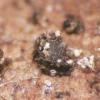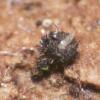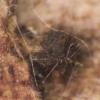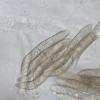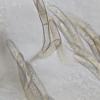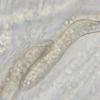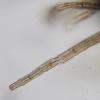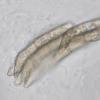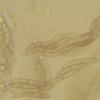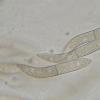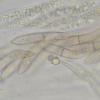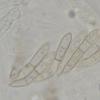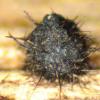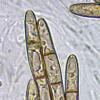
18-12-2025 21:17
Pol DebaenstThe identification took me to Byssonectria deformi

15-12-2025 07:09
 Danny Newman
Danny Newman
indet. Rutstroemiaceae sp. on unk. fallen leavesMc

19-12-2025 10:10
Patrice TANCHAUDBonjour, récolte réalisée en milieu dunaire, a

18-12-2025 17:23
 Bruno Coué
Bruno Coué
Bonjour,je serais heureux d'avoir votre avis sur c

18-12-2025 18:07
Margot en Geert VullingsThese plumes were found on rotten wood.They strong

17-12-2025 18:35
 Michel Hairaud
Michel Hairaud
Bonjour à tous/Hi to everyone I am passing along

15-12-2025 15:48
 Danny Newman
Danny Newman
Melanospora cf. lagenaria on old, rotting, fallen

15-12-2025 15:54
 Johan Boonefaes
Johan Boonefaes
Unknown anamorph found on the ground in coastal sa

15-12-2025 21:11
 Hardware Tony
Hardware Tony
Small clavate hairs, negative croziers and IKI bb
on my last field trip I found a few ascos which I cannot determine without your help. The first one is a Hilberina with brown ascospores (already inside the ascus) which measure about 35-42 x 3,5-4,5(5,5) µm and have mostly one septum, rarely two (three could be possible given the pattern of septation but I never observed more than two septa). Ascospore morphology seems to deviate from most of the known species in this genus...
It grows on the bast of a Fagus branch that was collected from the ground.
Help is very much appreciated!
Best wishes,
Gernot

Andy
I had initially excluded H. breviseta because Hilber & Hilber (http://www.landesmuseum.at/pdf_frei_remote/Sydowia_36_0105-0117.pdf) describe and illustrate the ascospores with more attenuate basal parts (also overall a bit longer). Maybe this is not always the case? Other than that it seems to fit decently well.
Hilberina caudata I thought should have more sharply curved basal ends so I had excluded that one as well. Really not an easy group this...
Best wishes,
Gernot

I am a lumper, not a spliter - what can I say?
Andy

H. breviseta has spores with an acerose basal end, so it should be exluded here. Otherwise H. caudata has much longer and wider spores compared to your collection and should excluded too.
Into my opinion your collection should be situated close to H. moseri, a species I never collected however and is said ot have slightly longer spores. Sequencing would be helpful here.
Best regards,
Bernard
Hi friends,
Good guess from Bernard ! I know a little this species for having collected more than 6 times I'm at present time working on Lasiosphaeria moseri, by a strange and incredible coincidence. The mine on Buxus, as usual.
See photos of ascospores, one can observe an intraspecifical variability in shape and size of ascospores.
Alain

Andy
Hi Andy,
I look at material. If it's good, mature and sufficient, I send it to you. If not, I think I can to find more next week.
Alain

Only Andy can solve this mess!
Jacques

Andy
Best wishes,
Gernot
Me too, not enough material, as it's often with such species, but I've a good hope to find it again.
Alain

